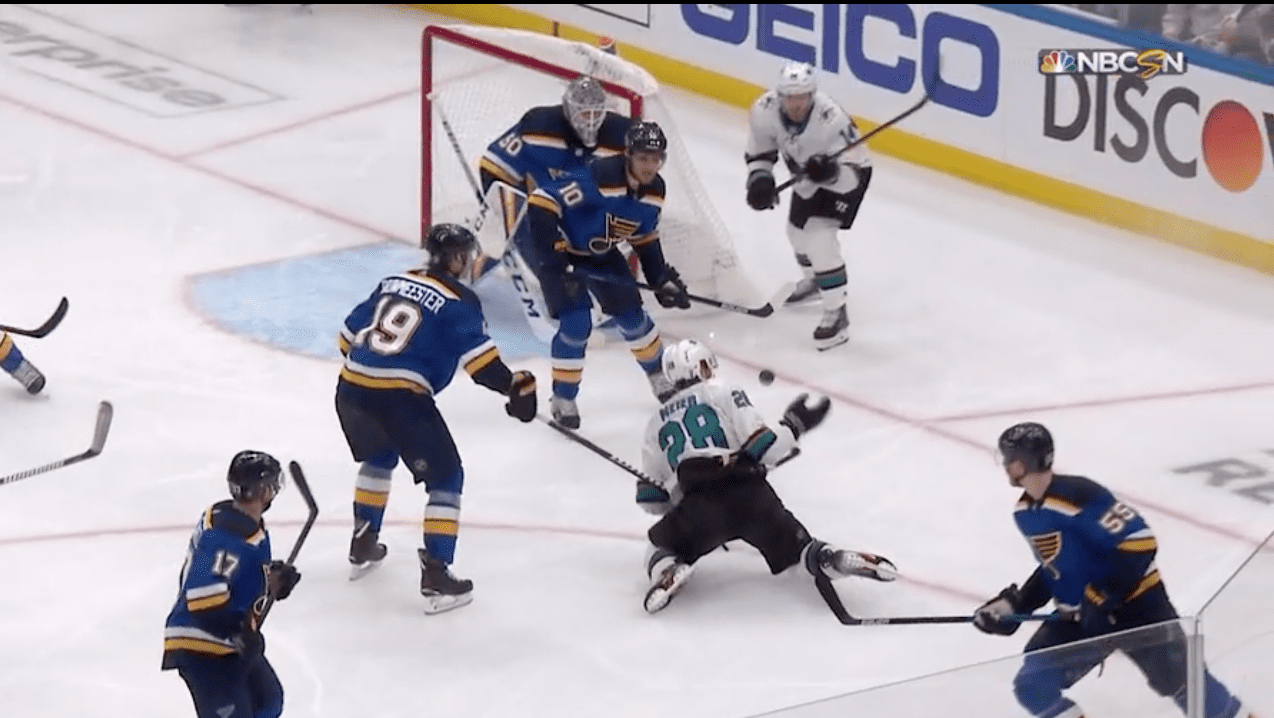NHL
Kingerski: Video Reviews Can Work, But Not Like This

Video review got it wrong again. Actually, it was the lack of available review this time as the San Jose Sharks were again gifted a call from the review rules when an obvious handpass led to the game-winning goal in OT Wednesday night. But handpasses are not reviewable because…no one has ever thought about it before.
It just doesn’t have to be this hard or this controversial. The entire premise upon which video reviews were introduced into sports was to get the call on the field or the ice correct. So what if it takes an extra 30 seconds, right? That is the theory and it is accurate, except for human beings. And so here we are again after officials missed a call which decided Game 3 of the Western Conference Final.
Shakespeare often included the contradiction of the letter of the law against the spirit. He used it for comic device though Colorado fans probably don’t find it too amusing after a tying goal in Game 7 of Round Two was waived off because of a (potentially) misapplied rule noticed only on video review. Gabriel Landeskog stood on the ice just inside the offensive zone waiting to hop onto the bench. It was ruled he didn’t touch up and was offside even though he no longer counted as a player on the ice.
San Jose won that game, too.
As usual, human beings have screwed up infallible replay with overthinking and minute parsing. The letter of the laws is being enforced, which is far from the spirit of the rules. And it violates the spirit which first included technology and replays into the game.
You can review this but not that — review offside but not a handpass. You may review the judgment based goalie interference but not if the puck hit the netting above the glass.
Stop the insanity.
Not even horses are immune to video challenge stupidity (though the losing horse in the Kentucky Derby was not assessed a two-minute minor nor did he lose his timeout).
The offside review was instituted as several games were decided by clearly blown offside calls, including playoff games. That makes sense as offside is not a judgment call. It was great until it progressed to zoom micro shots 100x to see if a skate blade was touching the ice. Good grief, that’s not how it was supposed to work.
If on-field officials review too much, the game will have no human element. The games will forever stop and re-start (For the record, Pfizer, Budweiser, Chevrolet, McDonald’s, Pizza Hut and advertising salespeople have endorsed that concept).
The solution to this is simple, yet no one seems to want a real solution. Those in charge and even fans keep chasing the ghost of the replay format as first instituted by the NFL long before HD TV and lightning fast internet connections. The thought was to limit reviews to keep the flow of the game.
But why do video reviews have to stop the game? Why must we go through this 1980s style dance in which the coach must halt the game, discuss with the officials, who retire to a private area to watch the replay which fans have by now seen at least three times in excruciating detail?
Do we not have instant technology with multiple screens and someone able to watch in real time? If TV producers can do it, why can’t the leagues?
Every non-judgment call should be reviewable. Every single one. Handpasses, netting, and offside. Head hits should also be reviewable. We’re treated to endless replays of a guy suddenly having a squishy melon anyway. But the calls should not delay play for minutes at a time. Every single game should have multiple video officials participating in real time.
The coach can initiate a review. The officials can chat with the eyes in the sky via wireless technology. Heck, let Microsoft or Samsung spend billions on the sponsorship and slap a logo on the ref’s helmet if you must.
In the time it takes the officials to huddle, the call can be made.
Current replay highlights the humourous technology gap and stale thinking. Coaches chat via smartwatches to people watching multiple screens. Within seconds Pittsburgh Penguins video coach Andy Saucier knows if it was offside. The process doesn’t even take a full 30 seconds. Yet to challenge the call, Penguins head coach Mike Sullivan has to stop the game, explain to the officials what the team has already rewatched. Only then do the officials skate over to the penalty boxes, chat via headsets and watch the play on a little tablet.
How about a real-time video official simply signals that it was offside or onside? Perhaps a discussion of the rules would be applicable in some extreme cases like the Landeskog goal.
Done.
And no more super slow motion, ultra zoom angles. If you can’t see it with the naked eye, it didn’t happen. Goal reviews are obviously exempt from this fantasy rule as the difference is often millimeters but a goal should be a goal.
The video review saga will continue as long as 2019 technology is clashing with 1950s procedures. Incorporate the technology or remove it. Right now it’s hurting the game and leaving as many bad calls on the ice and on the grass as there were before we had the ability to challenge. Sometimes ignorance is bliss, but once we bit the apple, we have to eat the whole thing.
Make the game reviewable by replay officials in real time and in real speed.












